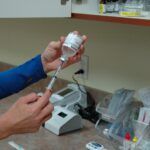Promoted by the complete spectrum of top European aviation, safety and ICT entities, the EU-funded SafeClouds.eu project is working to improve flight safety using Big Data tools.
If current techniques are not updated, the rapid increase in air traffic could compromise aviation’s high level of safety. According to the EU-funded Data-driven research addressing aviation safety intelligence project, one cost-effective way of making the necessary updates is with Artificial Intelligence (AI).
A collaboration between airlines, air navigation service providers (ANSPs), safety authorities, academia and SMEs, the project applies data science and machine learning approaches to generate new knowledge on how to help aviation stakeholders further improve safety. “SafeClouds.eu is demonstrating how data analytics, state-of-the-art ICT and safety intelligence can be used to accommodate higher levels of traffic, increase safety and reduce costs,” says Project Coordinator Paula Lopez-Catala.
AI for predicting safety hazards and precursor analysis
Today’s aviation system is structured around a number of isolated ‘data silos’. Due to legal, technical and commercial issues, these silos have limited – if any – interaction. The SafeClouds.eu project aimed to change this and, in doing so, pave the way for a new paradigm where aviation is primarily based on actively shared data.
For SafeClouds.eu this change begins with AI. According to Lopez-Catala, AI techniques, including deep learning and artificial neural networks, allow one to analyse the precursors of safety events. “Understanding the precursors and potential risks that may lead to a safety incident is critical to complementing the traditional methods of monitoring safety, reviewing accidents and incidents and extracting lessons learned,” she says.
As AI can automatically predict potential safety hazards in real time, it is a key tool in supporting timely reactions. “The techniques and algorithms are tailored, customised and tested to be effective in every safety scenario, from unstable approaches to terrain warning, mid-air losses of separation and runway safety,” adds Lopez-Catala.
More Information
Access to the full news







Leave a Reply